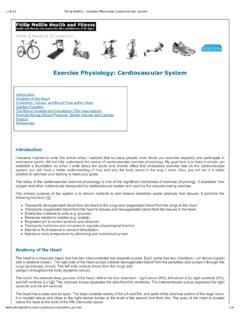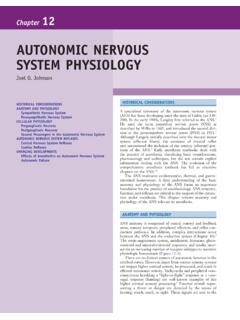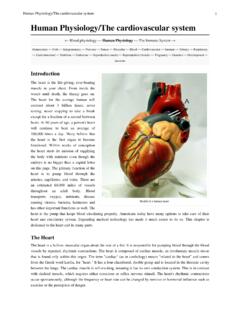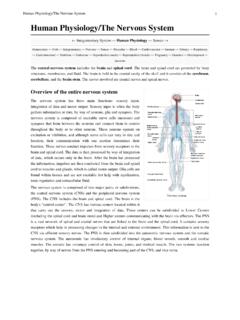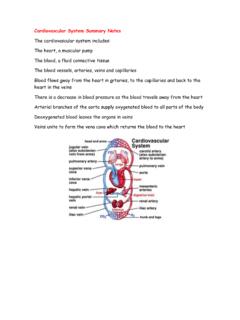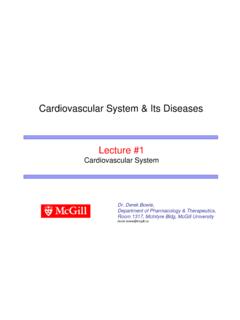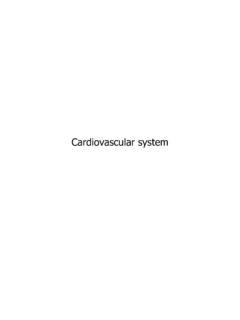Physiology Of Cardiovascular System Physiology
Found 9 free book(s)PHYSIOLOGY OF CARDIOVASCULAR SYSTEM - uniba.sk
www.jfmed.uniba.skPHYSIOLOGY OF CARDIOVASCULAR SYSTEM Physiology of the Heart Heart rate = 70/min, 100 000/day, 5 1/min, 4 500 l/day Morphology of the heart: 2 separate pumps – right/left Each – from 2 pumps – atria/vetricle Endocardium Myocardium – heart muscle Pericardium Histology: Arrangement of the cardiac muscle fibers (lattice-work)
Exercise Physiology: Cardiovascular System
www.colby.eduThe study of the cardiovascular exercise physiology is one of the significant disciplines of exercise physiology. It examines how oxygen and other nutrients are transported by cardiovascular system and used by the muscles during exercise.
AUTONOMIC NERVOUS SYSTEM PHYSIOLOGY
www.hsrsna.comThe ANS maintains cardiovascular, thermal, and gastro-intestinal homeostasis. A firm understanding of the basic anatomy and physiology of the ANS forms an important foundation for the practice of anesthesiology. ... Chapter 12 AUTONOMIC NERVOUS SYSTEM PHYSIOLOGY., PNS, Parasympathetic nervous system; ...
Human Physiology/The cardiovascular system
resources.saylor.orgHuman Physiology/The cardiovascular system 2 Myocardium The myocardium is the muscular tissue of the heart. The myocardium is composed of specialized cardiac muscle cells with an ability not possessed by muscle tissue elsewhere in the body. Cardiac muscle, like other muscles, can contract, but it can also conduct electricity, like nerves.
Cardiovascular Physiology - Jones & Bartlett Learning
samples.jbpub.com144 CHAPTER 7 — Cardiovascular Physiology Introduction The cardiovascular system consists of the heart and the connecting vasculature, from aorta to arterioles to capillaries to veins to vena cavae. It functions as the distributor of molecules to the billions of cells in the body. Hormones are transported to their target cells via the blood.
Human Physiology/The Nervous System - Saylor Academy
resources.saylor.orgHuman Physiology/The Nervous System 6 (The downswing) is caused by the closing of sodium ion channels and the opening of potassium ion channels. Release of positively charged potassium ions (K+) from the nerve cell when potassium gates open.
Cardiovascular System Summary Notes
cpb-eu-w2.wpmucdn.comCardiovascular System Summary Notes The cardiovascular system includes: The heart, a muscular pump The blood, a fluid connective tissue The blood vessels, arteries, veins and capillaries Blood flows away from the heart in arteries, to the capillaries and back to the
Cardiovascular System & Its Diseases Lecture #1
www.medicine.mcgill.caCardiovascular System & Its Diseases: Autonomic Nervous System The patient is 21 yrs old and has experienced frequent episodes of blurred vision, dizziness, faintness and syncope for as long as she can remember. She is the only child; her mother has a history of two spontaneous abortions at 12 and 14 weeks of gestation and one stillborn child at 38
Cardiovascular system - Mans
www1.mans.edu.egCardiovascular system. 1) The SA node is the normal pacemaker because of its : a) rate of impulse discharge b) location in the atrium c) neural control d) muscular structure e) relative position to the A.V node. 2) The SA node is the normal pace maker because :

